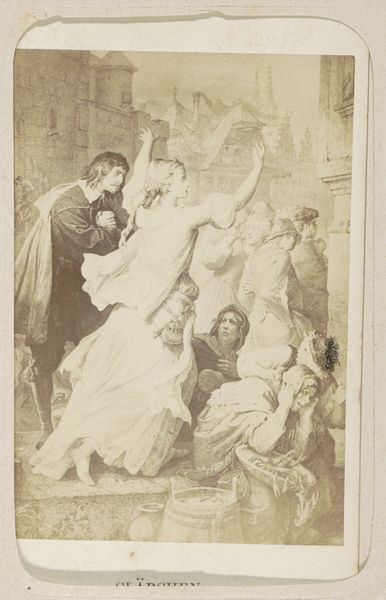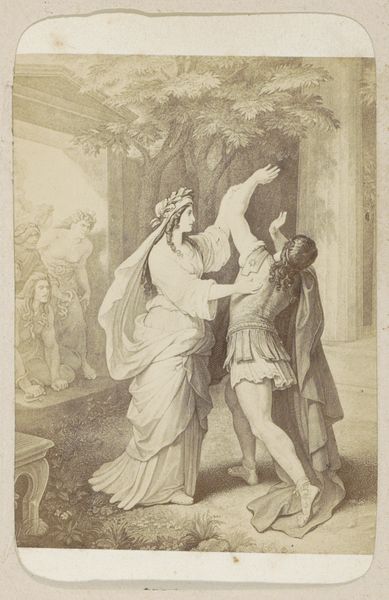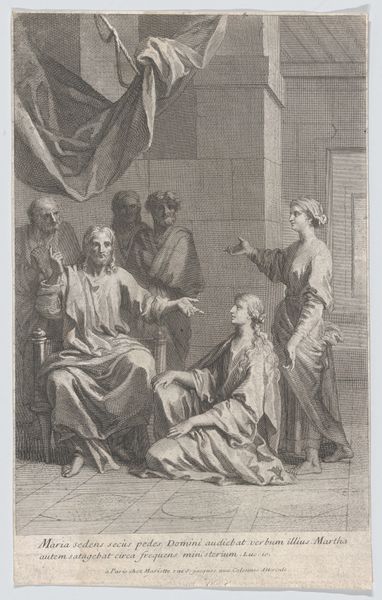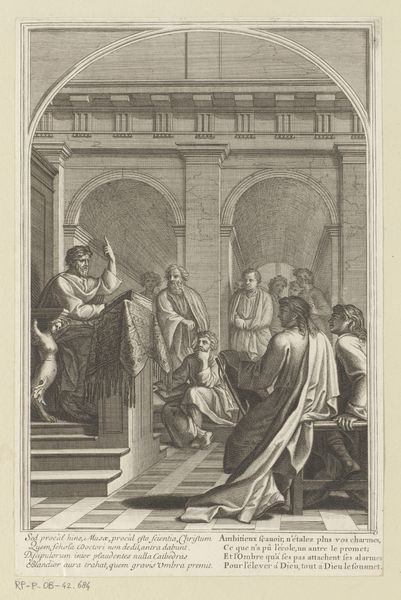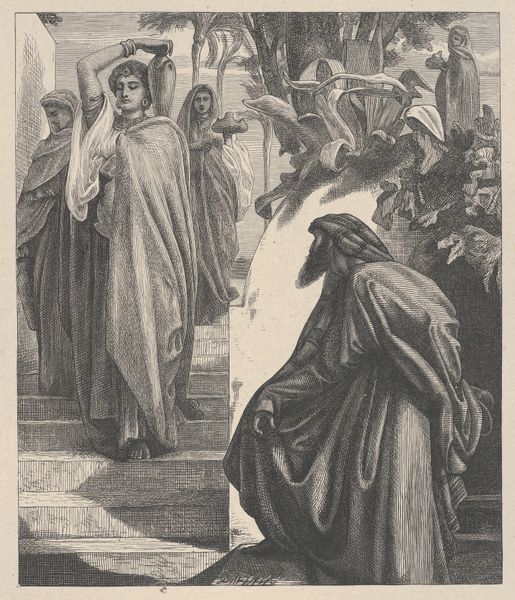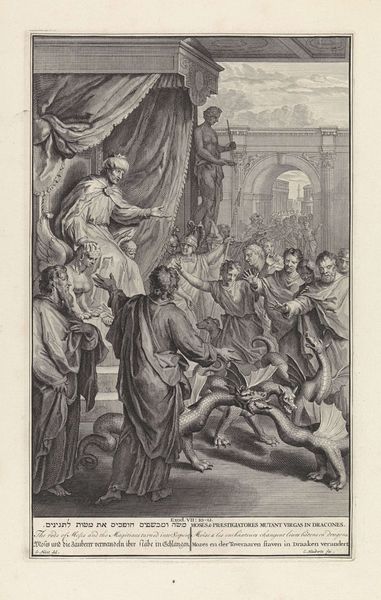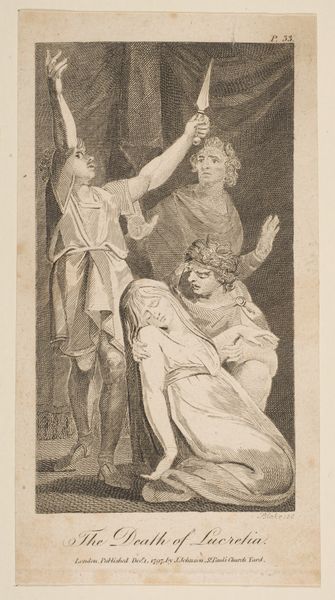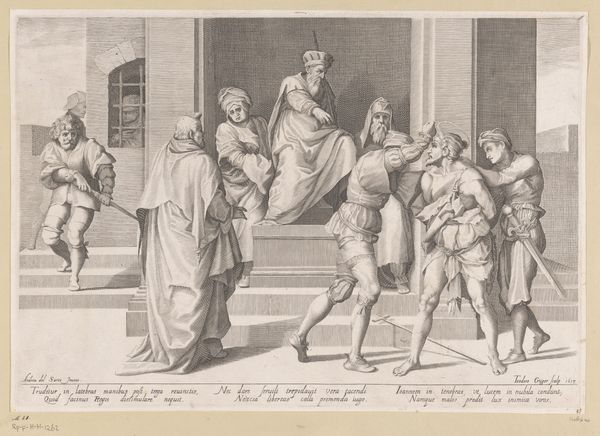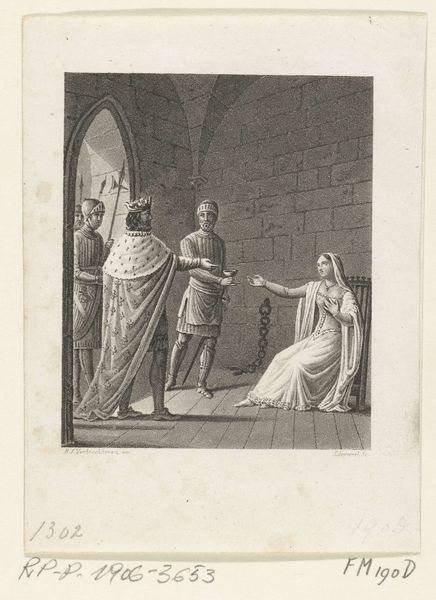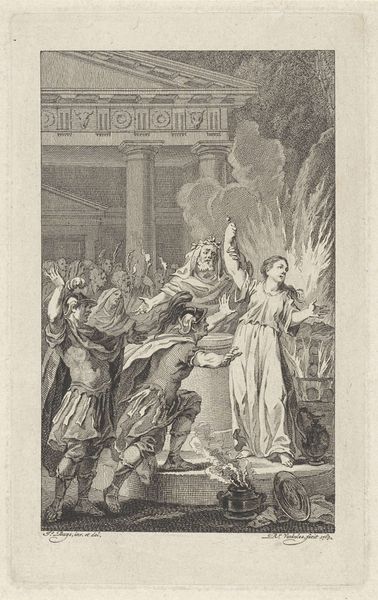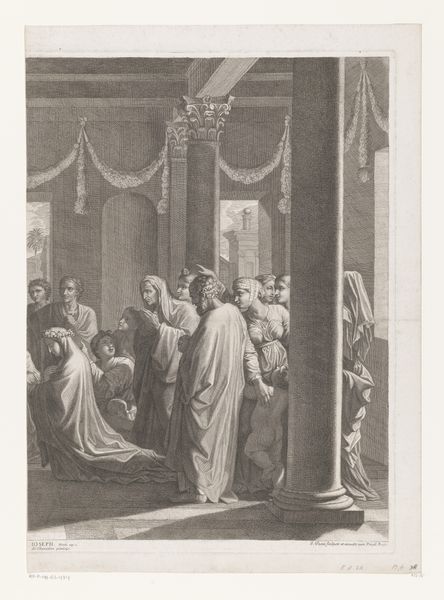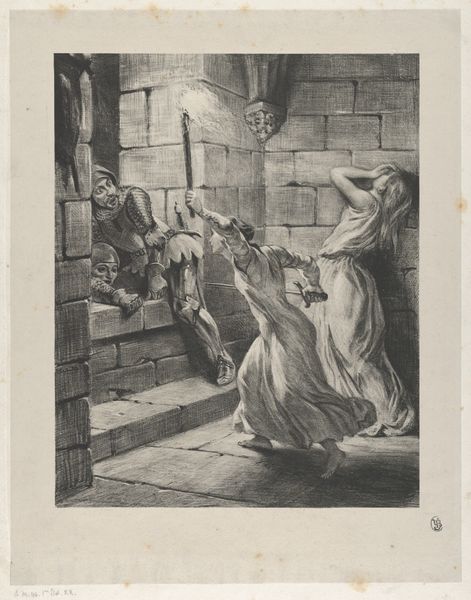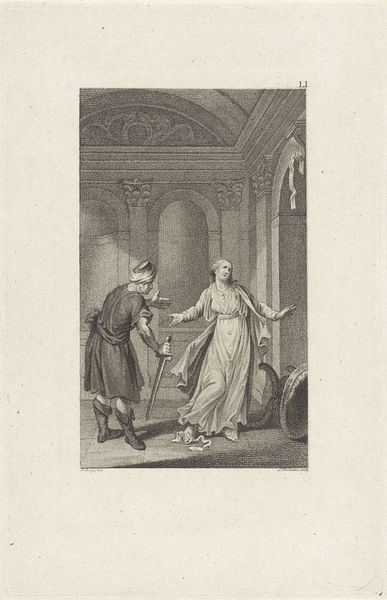
Fotoreproductie van (vermoedelijk) een prent naar werk van W. von Kaulbach: Gretchen (Kirchgang) (Faust) c. 1860 - 1890
0:00
0:00
Dimensions: height 72 mm, width 54 mm
Copyright: Rijks Museum: Open Domain
This photogravure, after a work by W. von Kaulbach and reproduced by Andries Jager, depicts Gretchen from Goethe’s Faust on her way to church. Note the rosary in her hands and the church looming behind her – symbols of piety. Yet, she is flanked by Faust and Mephistopheles, hinting at the corruption and moral struggle within. The rosary is an ancient device, predating even Christianity. Used across cultures, it’s a tool for contemplation. But here, it is fraught with tension. It is reminiscent of the memento mori, serving as a reminder of mortality and moral reckoning. Consider how this symbol, meant for devotion, becomes a sign of Gretchen’s internal conflict, a motif echoing through time from ancient prayer beads to modern anxieties. The emotional weight of her downcast eyes and hesitant posture engages our subconscious on a deep level, drawing us into her tragic narrative. This motif, this struggle between good and evil, continues to resurface, evolving and adapting in each new telling.
Comments
No comments
Be the first to comment and join the conversation on the ultimate creative platform.
